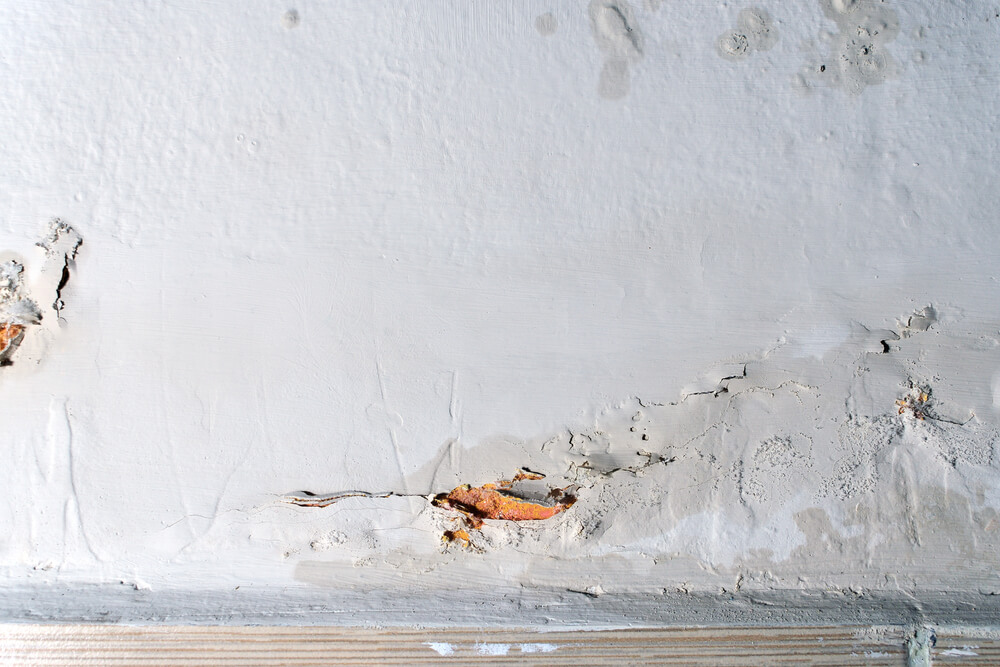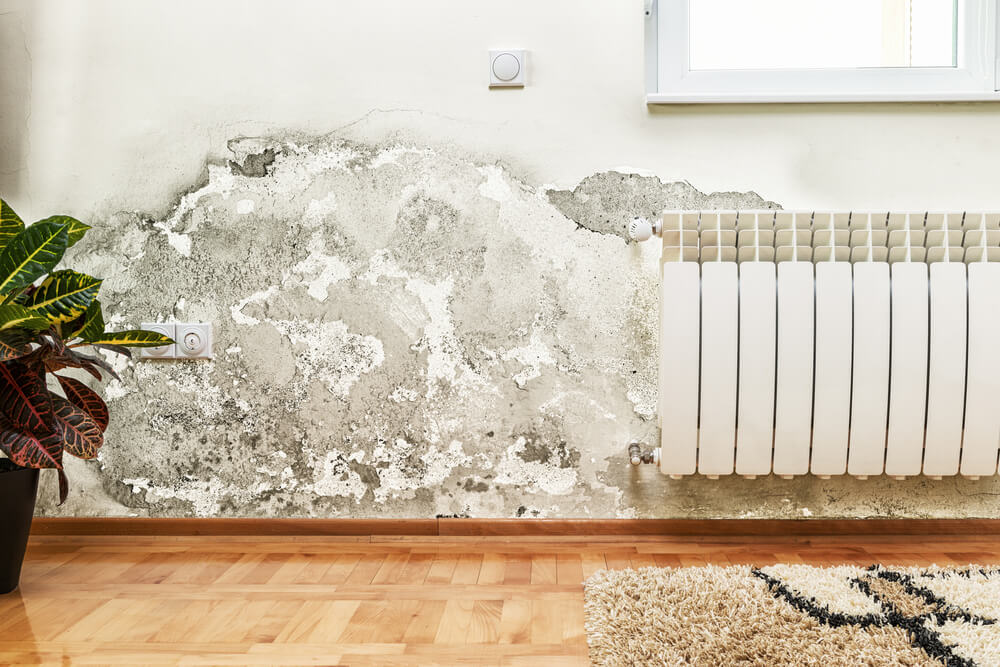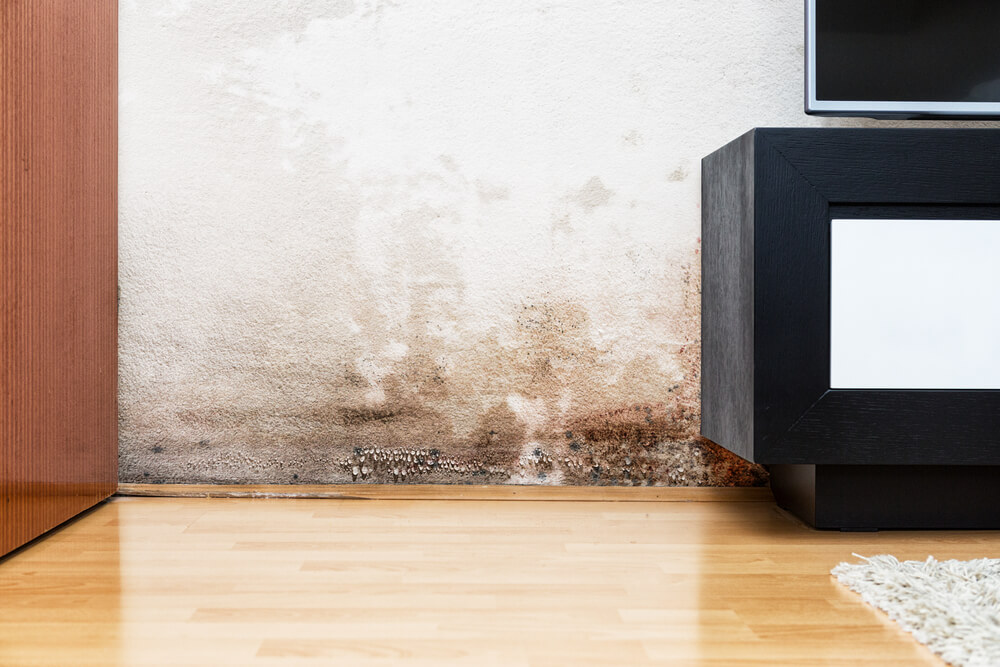Types of Moisture Problems that Can Affect Your Walls

Moisture problems in walls can result from a variety of causes. Though in most cases exterior damage or cracks are the culprits, there are other problems to be wary of as well. Identifying the root of the problem correctly is crucial as the right treatment depends on the cause.
As you probably already know, moisture issues go beyond the surface. While it might only seem like peeled paint at first, moisture problems can also directly endanger the safety of your home as they can cause fungi and microorganism growths.
Detecting the first signs is just as important as finding solutions. Knowing what kinds of moisture problems exist beforehand in addition to learning ways to solve them will be a big help. Do you know what they are?
Make sure you know these moisture problems
These kinds of problems show up on the walls. For the most part, they leave surfaces crackled and duller if there’s paint. On top of that, dark spots begin to appear and they can even spread to the ceiling.
The smell that comes with these problems is the worst part. They can lead you to develop allergies and respiratory problems. And that’s exactly why you need to know how to identify the root of the problem and how to eliminate it. Keep reading to learn just that.
Condensation
One of the biggest problems that we tend to miss is moisture problems that result from condensation. Instead of from our home interiors, many of us believe that the problem comes from the exterior and we use the wrong treatments. But condensation often appears after cooking, washing clothes and drying them indoors next to radiators.
When water vapor comes into contact with cold surfaces, such as walls, the moisture condenses into water droplets and seep into the structure. Consequently, mold and unpleasant smells appear as well as problems keeping a home warm.

What could be the problem?
- Poor ventilation
- Insufficient thermal insulation
- Defects in a home’s construction
- Poor placement of a heater
- Incorrect use of a heater
How can you fix it?
Ensuring good ventilation in each room in your home is the best way to prevent condensation from forming. Open your doors and windows 5 to 10 minutes each day. Or, you can also try these other ideas:
- Install windows that have quality thermal insulation; low-emissivity glass is the best option.
- Install demand-controlled ventilation windows. These windows use a system that allows a set amount of fresh air in without sacrificing insulation.
- Use a dehumidifier in areas with higher levels of humidity such as bathrooms or kitchens.
Capillary action
Problems caused by capillary action can affect any kind of building. These sorts of moisture problems are very common in old homes that lack a physical barrier to protect walls. Over time, groundwater makes its way into the foundations of buildings.
Groundwater contains mineral salts that build up on the surfaces of walls once the water evaporates. These salts attract moisture from the surroundings, and become a problem. Water can easily seep through porous materials like stone and brick.

What could be the problem?
- As explained above, capillary action damage results from groundwater entering porous wall foundations. These problems can also arise from burst pipes.
How do you know if you have a capillary action moisture problem?
- Capillary action quickly wears down construction materials. In fact, it can also damage furniture, wooden frames, electric appliances and more.
- Mold will spread up to a meter high. Paint and wallpaper will peel. You might also notice white spots.
How can you fix it?
- If your home is already built, you can make insulating walls to minimize damages. You should also consider anti-mold products.
- Check your pipes for possible leaks.
- Keep your drains clean to prevent obstructions.
Filtration
Moisture problems that result from filtration are common in areas that lack preventative measures against water damage. They often originate from the outside, but many cases experience the opposite as well. Filtration problems most often affect underground areas that are in direct contact with the earth around them.

What could be the problem?
- Lack of or insufficient external protection against water
- Damage or cracks in walls
- Underground constructions such as basements or retaining walls
How do you know if you have a filtration moisture problem?
- Just as in the previous cases, filtration problems wear down construction materials. Over time, they can weaken the structure of a home.
- They also present a danger in electric installations as well as cause unpleasant smells and furniture damage.
How can you fix it?
- Make sure to build your home away from water sources or with insulating materials to prevent filtration problems. If your home is already built, try covering the affected area with an insulating wall.
- If you’re noticing a continuous filtration problem, install a drainage system.
- You should also repair any exterior cracks and apply anti-mold paint.
Do you have moisture problems? Try identifying the source to give your walls the right treatment. If you can’t seem to fix it on your own, contact a professional to finish the job.
Moisture problems in walls can result from a variety of causes. Though in most cases exterior damage or cracks are the culprits, there are other problems to be wary of as well. Identifying the root of the problem correctly is crucial as the right treatment depends on the cause.
As you probably already know, moisture issues go beyond the surface. While it might only seem like peeled paint at first, moisture problems can also directly endanger the safety of your home as they can cause fungi and microorganism growths.
Detecting the first signs is just as important as finding solutions. Knowing what kinds of moisture problems exist beforehand in addition to learning ways to solve them will be a big help. Do you know what they are?
Make sure you know these moisture problems
These kinds of problems show up on the walls. For the most part, they leave surfaces crackled and duller if there’s paint. On top of that, dark spots begin to appear and they can even spread to the ceiling.
The smell that comes with these problems is the worst part. They can lead you to develop allergies and respiratory problems. And that’s exactly why you need to know how to identify the root of the problem and how to eliminate it. Keep reading to learn just that.
Condensation
One of the biggest problems that we tend to miss is moisture problems that result from condensation. Instead of from our home interiors, many of us believe that the problem comes from the exterior and we use the wrong treatments. But condensation often appears after cooking, washing clothes and drying them indoors next to radiators.
When water vapor comes into contact with cold surfaces, such as walls, the moisture condenses into water droplets and seep into the structure. Consequently, mold and unpleasant smells appear as well as problems keeping a home warm.

What could be the problem?
- Poor ventilation
- Insufficient thermal insulation
- Defects in a home’s construction
- Poor placement of a heater
- Incorrect use of a heater
How can you fix it?
Ensuring good ventilation in each room in your home is the best way to prevent condensation from forming. Open your doors and windows 5 to 10 minutes each day. Or, you can also try these other ideas:
- Install windows that have quality thermal insulation; low-emissivity glass is the best option.
- Install demand-controlled ventilation windows. These windows use a system that allows a set amount of fresh air in without sacrificing insulation.
- Use a dehumidifier in areas with higher levels of humidity such as bathrooms or kitchens.
Capillary action
Problems caused by capillary action can affect any kind of building. These sorts of moisture problems are very common in old homes that lack a physical barrier to protect walls. Over time, groundwater makes its way into the foundations of buildings.
Groundwater contains mineral salts that build up on the surfaces of walls once the water evaporates. These salts attract moisture from the surroundings, and become a problem. Water can easily seep through porous materials like stone and brick.

What could be the problem?
- As explained above, capillary action damage results from groundwater entering porous wall foundations. These problems can also arise from burst pipes.
How do you know if you have a capillary action moisture problem?
- Capillary action quickly wears down construction materials. In fact, it can also damage furniture, wooden frames, electric appliances and more.
- Mold will spread up to a meter high. Paint and wallpaper will peel. You might also notice white spots.
How can you fix it?
- If your home is already built, you can make insulating walls to minimize damages. You should also consider anti-mold products.
- Check your pipes for possible leaks.
- Keep your drains clean to prevent obstructions.
Filtration
Moisture problems that result from filtration are common in areas that lack preventative measures against water damage. They often originate from the outside, but many cases experience the opposite as well. Filtration problems most often affect underground areas that are in direct contact with the earth around them.

What could be the problem?
- Lack of or insufficient external protection against water
- Damage or cracks in walls
- Underground constructions such as basements or retaining walls
How do you know if you have a filtration moisture problem?
- Just as in the previous cases, filtration problems wear down construction materials. Over time, they can weaken the structure of a home.
- They also present a danger in electric installations as well as cause unpleasant smells and furniture damage.
How can you fix it?
- Make sure to build your home away from water sources or with insulating materials to prevent filtration problems. If your home is already built, try covering the affected area with an insulating wall.
- If you’re noticing a continuous filtration problem, install a drainage system.
- You should also repair any exterior cracks and apply anti-mold paint.
Do you have moisture problems? Try identifying the source to give your walls the right treatment. If you can’t seem to fix it on your own, contact a professional to finish the job.







